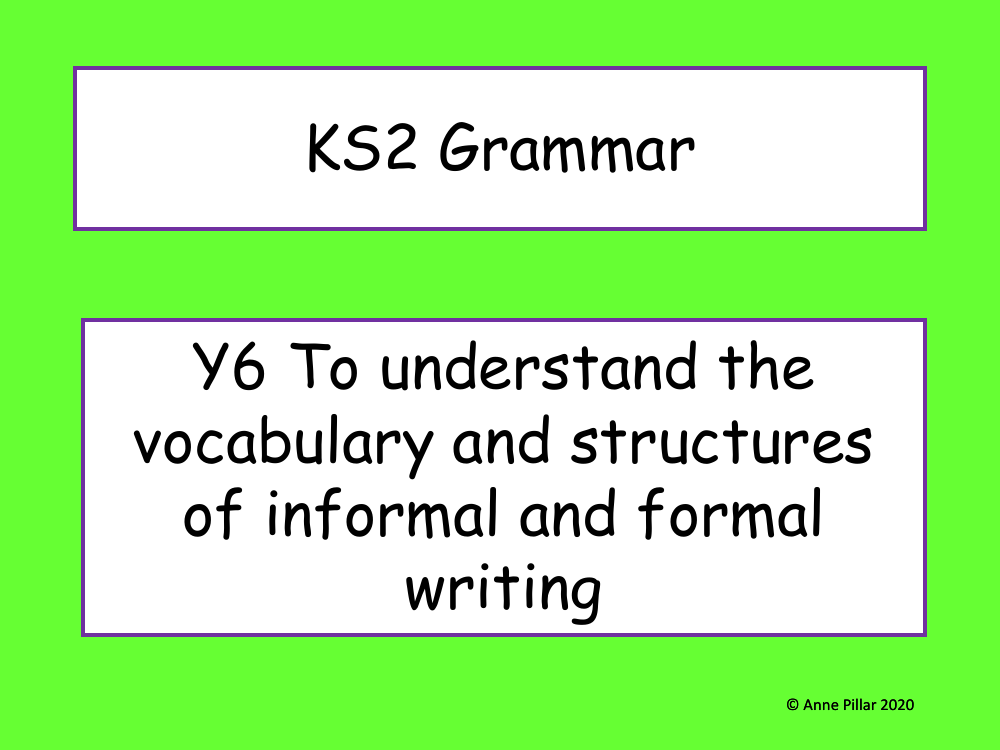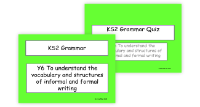Formal and Informal Language Presentation

English Resource Description
Anne Pillar's presentation for Key Stage 2 Grammar focuses on the vocabulary and structures of formal and informal writing, specifically tailored for Year 6 students. The PowerPoint, which is a comprehensive resource bank, is divided into sections for ease of use and includes whole-class input, group and paired activities, as well as independent tasks. The teacher has the discretion to adjust the level of support provided during these activities. The content covers the distinction between formal and informal writing, when and how to use each, and provides examples and alternatives to help students understand the effect of different writing styles on the reader.
The presentation explains that formal writing is characterised by impersonality, the use of passive voice, formal vocabulary, and conventional phrases. It is typically employed in situations where respect or a good impression is needed, such as in business letters or when addressing authority figures. Informal writing, on the other hand, is more personal, uses contractions, shorter sentences, and mirrors spoken language. It is used among friends and in relaxed settings. The presentation includes exercises for converting phrases between formal and informal language, illustrating the nuances of each style. Students are also encouraged to identify examples of formal and informal writing in their reading books and to practice rewriting texts in different registers, enhancing their understanding and versatility in writing.


